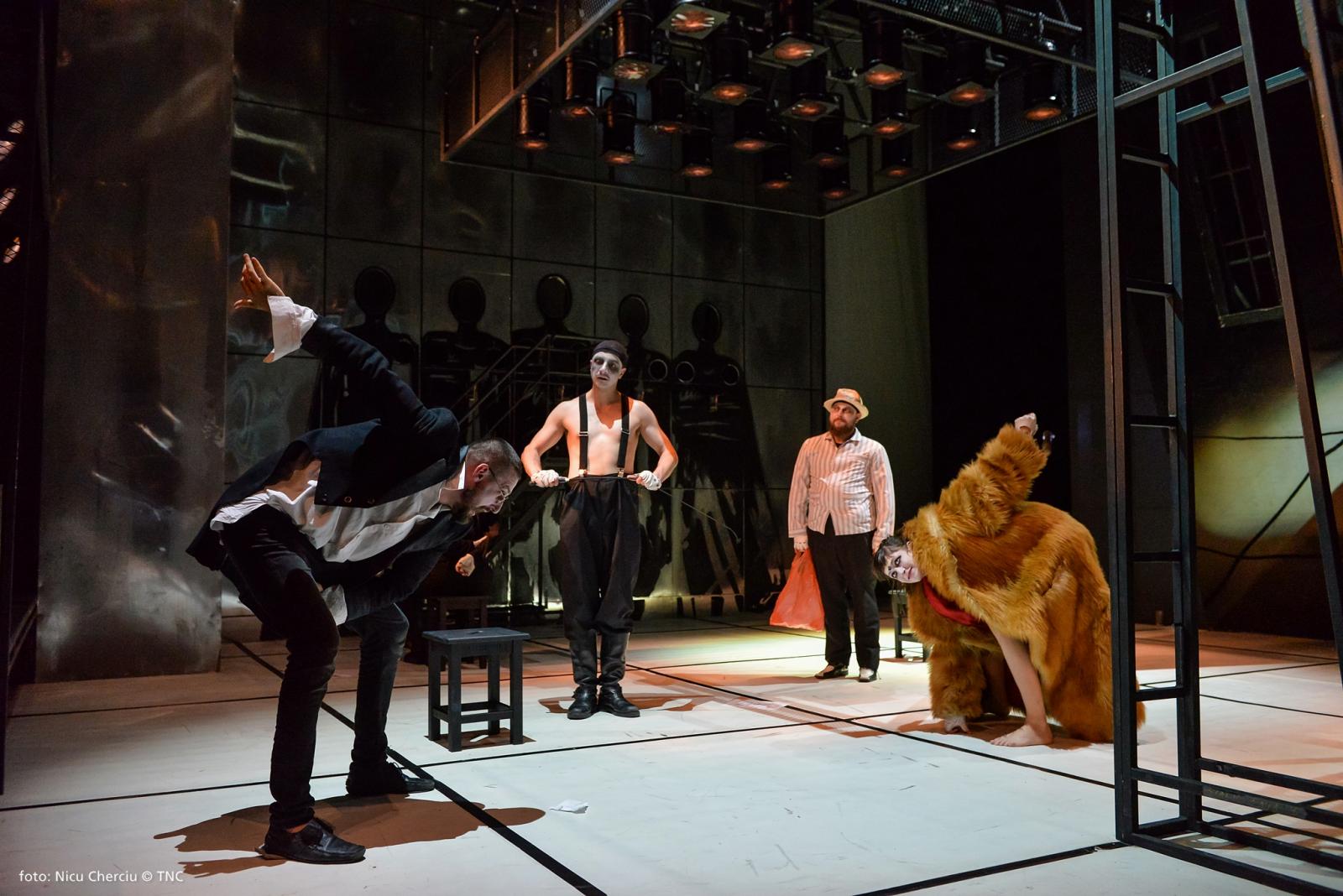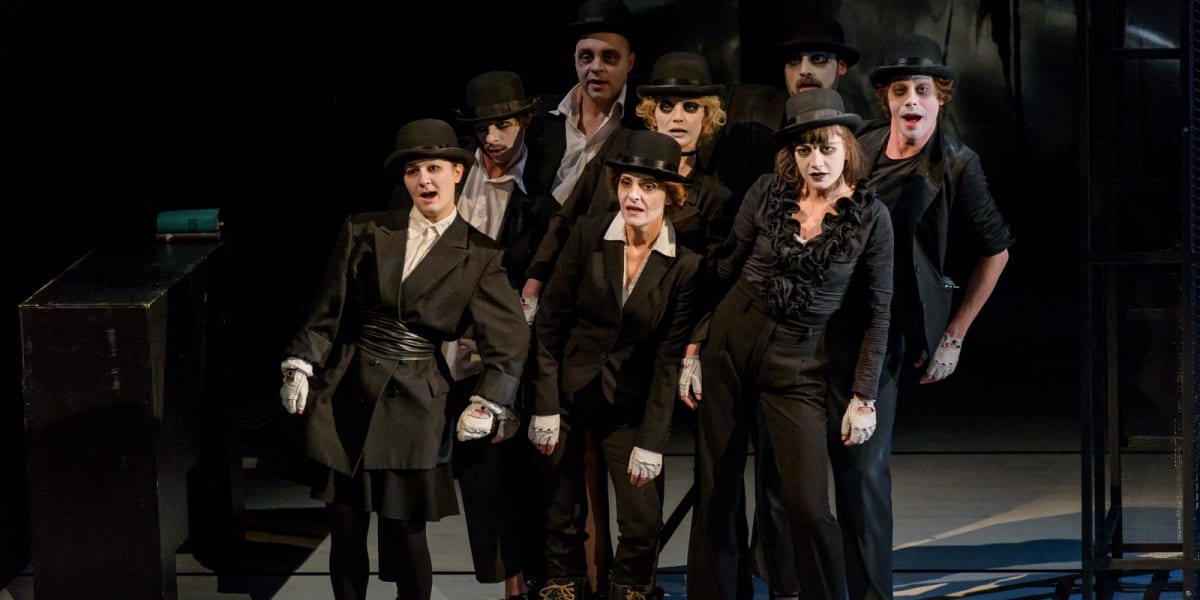Kafka’s The Trial is one of the greatest literary works of the twentieth century and one of the masterpieces of German prose, albeit by a Bohemian Jew. Like Kafka’s other novels, it was left unfinished, even if the story does come to a conclusion.
As this is a long work with an intricate plot, I wonder, before going to the theatre, how the adaptation could possibly work on stage. And indeed, it does not. The dramatisation is quite good, but the fact that most of the actors must interpret multiple parts makes the action very hard to follow.

Another issue is that of the atmosphere. Kafka was obsessively and consciously influenced by Dostoyevsky, but he was also one of the first writers to announce surrealism (by a blend of realism and fantastic), and his novel is also marked by the oppression of the beginning of WW1 and authoritarianism. In the text, all this results in a heavy, hallucinating and nightmarish atmosphere that makes for captivating reading. On stage, however, all this must be “translated” visually. The result is a chromatic blend of black, white and many shades of grey. Panainte and Stürmer give chaos a scenic dimension. The sets are composed mainly of scaffolding, ladders, gauze and wire.
The absurd is shown as an ambivalence between humanity and animal elements – a woman who walks like a spider, another one who has two voices (a human and an animal one), people who howl, etc. If read, the atmosphere is fascinating, albeit oppressive. When watched, it is exhausting and irksome.
There are many good ideas when it comes to symbolic representation: K’s birthday is expressed by a cake-like tower made of the employees’ hats and one candle burning at the back. The props are “fluid”, made of modules; for instance, K’s bed is rearranged into a desk. The night lamp is used as an interrogation lamp. Incomprehensible human behaviour is reflected through robotic and repetitive gestures. Uniformity is symbolised by identical clothes, while K is singled out by the fact that he is the only one to wear a grey, not a black hat. Bureaucracy glares as piles of paper are amassed on desks and on floors, alternately signifying the monotony of bank work and the maddening workings of the law, reminiscent of Dickens’s Bleak House. And one of the characters, the student Berthold, is significantly dressed like a clown.

So, at the level of ideas, this would work. But on stage, this fails to excite and, on the contrary, creates a performance that is tiring and nerve-wracking. The lack of any major acting talent unfortunately contributes to the unappealing adaptation of the novel for the theatre.
This is a carefully devised, well thought-out professional production. Unfortunately the choice of text and cast do not support its becoming a memorable one.

